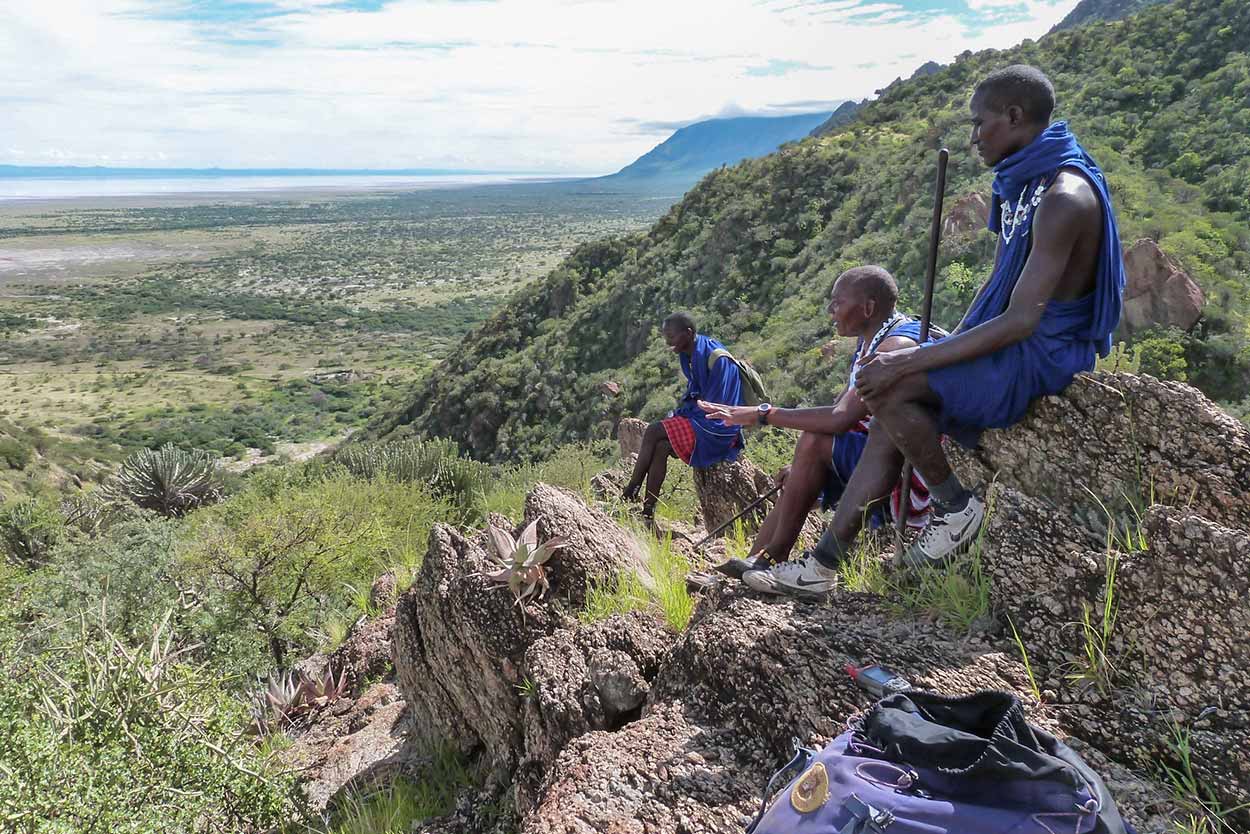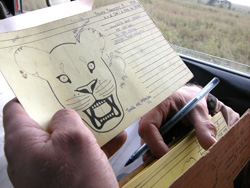Serengeti Lion Project
Since 1966
The Serengeti Lion Project - world's longest continuous mammal study
Over Twenty resident lion prides residing in and around the Central Serengeti have been continuously studied since 1966, when George Schaller began his groundbreaking field study. From its humble beginnings The Serengeti Lion Project has become the longest continuous field study ever conducted on a large mammal. One female member from each of the 26 prides is radio collared so that they can be tracked and studied on a weekly basis. Two field biologists are stationed in Seronera (in central Serengeti) 365 days a year to monitor and continue this long-term study, and are considered the world's foremost experts on lion behavior and ecology.
Research staff have produced nearly 100 articles of scientific importance on lions and their health, habitat and conservation. Its work receives considerable international publicity: we have been featured many times on the BBC, National Geographic TV, the Discovery Channel, ITV, NHK and television networks in Korea and Germany, as well as in The Smithsonian magazine, Geo Magazine, and National Geographic Magazine.
At any given time, the field teams keep track of about 330 lions in 24 prides in the Serengeti, 50-60 lions in 5 prides on the floor of Ngorongoro Crater, 150-200 lions in 10 prides in Tarangire, and 100 lions in 15 prides in the Selous. This daily monitoring maintains demographic records that were started in the 1960s, yielding one of the most extensive datasets on any mammalian species anywhere in the world-over 5,000 lions have been included in the Serengeti and Crater studies over the past 40+ years, and genealogical data from these two populations extend over 12 generations. The daily records include information on the lions' location, group size, diet, food intake, health and reproduction.
For more information about The Serengeti Lion Project and The Lion Research Center are headquartered at the University of Minnesota’s College of Biological Sciences please visit www.lionresearch.org
SPECIAL MENTION
Craig Packer, who headed up The Serengeti Lion Project from 1978 to 2013 (35 years) deserves special mention. Read his bio below and click on the Articles of Interest to learn more:
Craig Packer was born in Texas and received his undergraduate degree from Stanford University in 1972. While still at Stanford, Packer went to Tanzania to study baboons with Jane Goodall at the Gombe Stream Research Centre. He then went to the University of Sussex to complete his Ph.D. research on the Gombe baboons. After a study of Japanese macaques in Hakusan National Park, Packer returned to Tanzania in 1978 to head the Serengeti lion project. He subsequently held a post-doctoral position at the University of Chicago and joined the faculty of the University of Minnesota in 1983, returning to the Serengeti for several months each year. Packer received a J.S. Guggenheim Fellowship in 1990, became a Distinguished McKnight University Professor in 1997, and was elected to the American Academy of Arts and Sciences in 2003. He is the author of "Into Africa," which won the 1995 John Burroughs medal, and more than 100 scientific articles, most of which are about lions. His research has been supported primarily by grants from the National Science Foundation.
Courtesey generosityinaction.org
WATCH THE VIDEO: The Serengeti Lion Project
ARTICLES OF INTEREST:
The Short Happy Life of a Serengeti Lion by National Geographic
Go back to: Researchers & species experts
KOPELION PROJECT - NGORONGORO
The KopeLion project is an extension of The Serengeti Lion Project whose goal is to develop and implement a sustainable model for positive coexistence between resident pastoralist and lions in Ngorongoro.
KopeLion, Korongoro People’s Lion Initiative, is a collaboration between lion researchers and the people of Ngorongoro, Tanzania. The goal is to develop and implement a sustainable model for positive coexistence between resident pastoralists and lions in Ngorongoro. Acknowledging the efforts needed to reach such goal, KopeLion is based on-site and we aim for long-term commitment in the area and with the people we partner with.
This work expands and builds upon Serengeti Lion Project’s unique, long-term dataset on lions from the Ngorongoro Crater, including family histories and population genetics, reaching back to 1962. Now our lion research also covers resident prides at the Serengeti border, and the few lions that still persist in the central section of Ngorongoro linking the Crater with nearby Serengeti. With access to the detailed lion data-set we have a rare opportunity to measure the effects of our lion conservation efforts on the vitality of the lion population.
Since 2011 the focus has gone beyond lion research and expanded to community conservation because we believe local engagement is paramount to the continued existence of lions in this landscape. Kopelion employs local warriors, many of them former lion killers, for culturally appropriate duties in lion monitoring and protection, livestock-wildlife interaction surveys, and in direct conflict mitigation. Our work is inspired by the Lion Guardians Ltd., and with them as partners we implemented their model here in 2014, adapted to the Ngorongoro conditions. We now have positive collaboration with local communities that have embraced our efforts, becoming the foremost ambassadors for lions.
Courtesey kopelion.org


 in northern-Tanzania.jpg)
